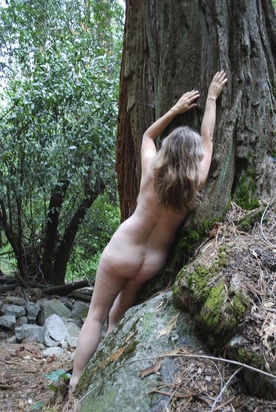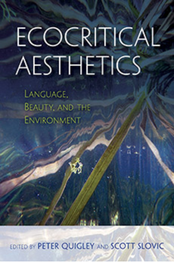In Janine's words: Why I take naked photos and put them on my blog

The first time I posted a naked photo on my blog, it was a joke, a one-time deal. But my readers loved it. That’s the thing about blogging. You get immediate feedback from your readers.
My readers wanted more photos. So whenever I was at a conference, I'd talk to my friends — and sometimes perfect strangers — and take another naked photo. Pretty soon my reputation spread, and people began asking to pose for me.
I was intrigued by the conversations in the comments on my blog. Women began emailing me stories about their body. I heard about bulima and rape. I heard from women who had been raised Catholic, Jewish, Mormon, Muslim — who felt religion affected how they viewed their bodies. Women talked to me about childbirth, about menopause, about aging.
At conferences, women began coming up to me saying, “You’re the naked photographer, aren’t you? I have a story to tell you.” The important part of the project, I’ve discovered, isn’t the photos. It’s the conversations that result because of the photos. Sometimes these conversations take place while I’m taking the photo. A woman comes to my room, takes off her clothes, and it’s an almost instant intimacy. It’s as if the photos are a catalyst that release the stories embedded in our bodies.
Ironically, the stories that a woman tells me while I’m taking her photo do not end up on my blog. What I put on my blog is often a funny story about how I took the picture.
At some point, I realized that the behind-the-scenes conversations, the stories that only I heard, were more important than what ended up on my blog. That’s when I decided to write a book. My plan is to go back and interview every person whose posed for me, and invite her to tell her story.
The naked photo project has been shaped by discussions in the comments of my blog, emails women have sent me, discussions that have taken place because of the photos. The book won't be just a recording of the stories, but a way of looking at how those stories get embedded in the body, how they get released, and how we share those stories.
—Janine DeBaise
My readers wanted more photos. So whenever I was at a conference, I'd talk to my friends — and sometimes perfect strangers — and take another naked photo. Pretty soon my reputation spread, and people began asking to pose for me.
I was intrigued by the conversations in the comments on my blog. Women began emailing me stories about their body. I heard about bulima and rape. I heard from women who had been raised Catholic, Jewish, Mormon, Muslim — who felt religion affected how they viewed their bodies. Women talked to me about childbirth, about menopause, about aging.
At conferences, women began coming up to me saying, “You’re the naked photographer, aren’t you? I have a story to tell you.” The important part of the project, I’ve discovered, isn’t the photos. It’s the conversations that result because of the photos. Sometimes these conversations take place while I’m taking the photo. A woman comes to my room, takes off her clothes, and it’s an almost instant intimacy. It’s as if the photos are a catalyst that release the stories embedded in our bodies.
Ironically, the stories that a woman tells me while I’m taking her photo do not end up on my blog. What I put on my blog is often a funny story about how I took the picture.
At some point, I realized that the behind-the-scenes conversations, the stories that only I heard, were more important than what ended up on my blog. That’s when I decided to write a book. My plan is to go back and interview every person whose posed for me, and invite her to tell her story.
The naked photo project has been shaped by discussions in the comments of my blog, emails women have sent me, discussions that have taken place because of the photos. The book won't be just a recording of the stories, but a way of looking at how those stories get embedded in the body, how they get released, and how we share those stories.
—Janine DeBaise
Beauty and the Body: Towards an Ecofeminist Aesthetic that Includes Loving Our Naked Selves"During Project Naked, I’ve witnessed how powerful it can be when a woman poses naked and claims herself as beautiful rather than waiting to be judged by an outsider. Loving our own bodies can be transformative. Perhaps an ecofeminist aesthetic that includes body love, that values the beauty of the human body and the stories embedded in that body, can help move us toward collective action to improving conditions for our bodies. Perhaps healing our disconnect with nature can begin with recognizing the beauty of our own naked bodies."
Excerpt from Chapter Seven, "Beauty and the Body: Towards an Ecofeminist Aesthetic that Includes Loving Our Naked Selves" by Janine DeBaise. Published in Ecocritical Aesthetics: Language, Beauty, and the Environment, edited by Peter Quigley and Scott Slovic, Indiana University Press, 2018. |
